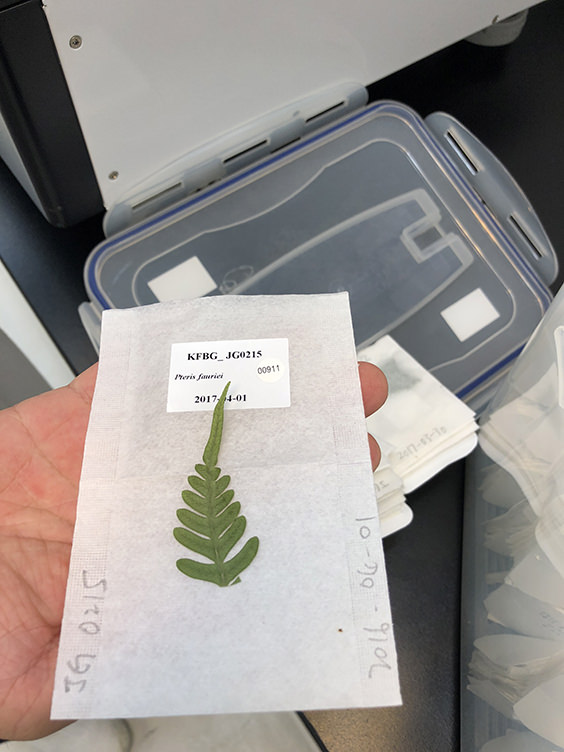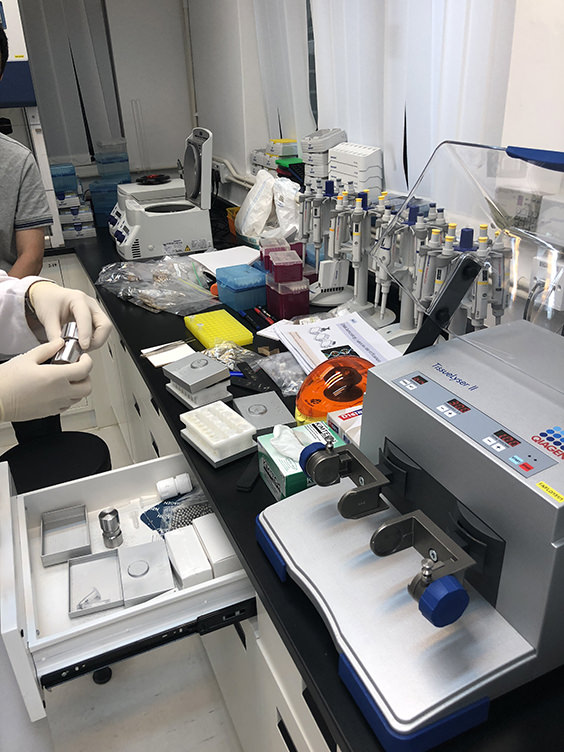
Forest restoration helps to heal our degraded environment and relieve the biodiversity crisis. Far from being a haphazard process of planting a random selection of trees, successful restoration requires careful consideration of the genetic diversity contained within the individuals of each tree species planted back into the environment. This is because sustained growth of a forest depends to a large extent on the health of its component trees, and the long-term health of a tree population is underpinned by a diverse gene pool. We conduct routine testing of commonly used tree species to ensure that the trees we plant throughout KFBG represent sufficient genetic diversity.
To do this, we use a set of genetic markers especially developed for each tree species to assess diversity within the plants grown from seed or from cuttings in our Native Tree Nursery (NTN). We then compare this to the diversity similarly measured in the trees planted in KFBG as well as in the wild populations that occur naturally in Hong Kong. By doing so, we can determine the proportion of total wild diversity that is captured by our seed collecting, nursery management and planting methods. All of this work is carried out in our Conservation Genetics Laboratory. The findings facilitate decision making that will help us establish healthy tree populations and nurture more resilient ecosystems in the face of a changing climate.


As an example, our genetic testing revealed that historic forest fragmentation in Hong Kong had affected population-level genetic diversity of one of our key restoration oak species, Quercus bambusifolia. We used this knowledge to formulate a tree-planting strategy that would enhance connectivity among the planted and wild populations of this species.
Further reading
Zeng, X., Fischer, G.A. 2020. Wind pollination over 70 years reduces the negative genetic effects of severe forest fragmentation in the tropical oak Quercus bambusifolia. Heredity 124: 156–169. doi.org/10.1038/s41437-019-0258-3
